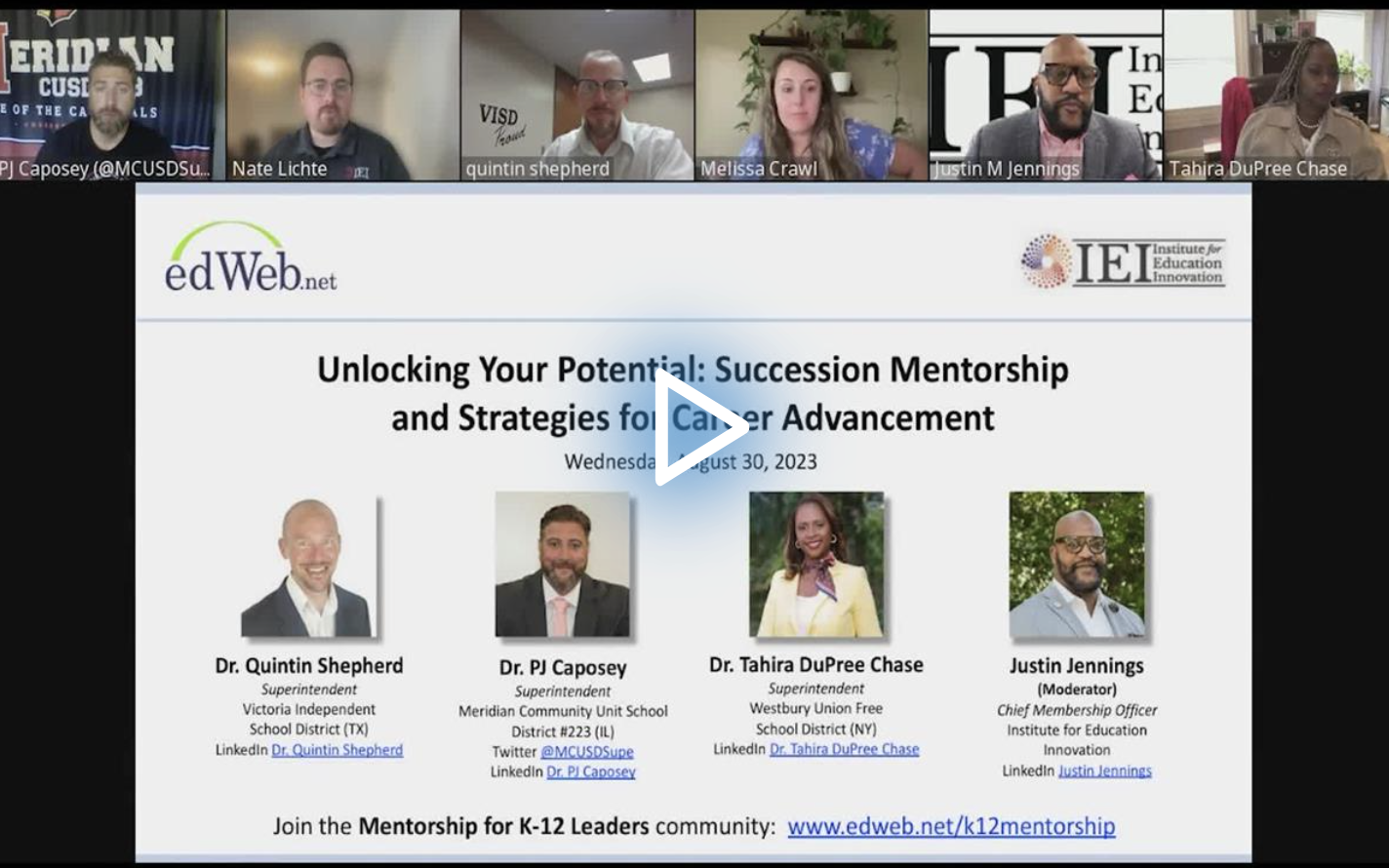Planning for the Inevitable: Developing Successful Leadership Succession Programs
Watch the RecordingListen to the Podcast
School administrators never know when they’ll be moving on. Whether it’s the end of the contract, a change in board membership, or a change in the community’s needs, the only certainty is that the next leader should be ready to take over.
Three superintendents, during the edLeader Panel “Unlocking Your Potential: Succession Mentorship and Strategies for Career Advancement,” offered their insights on identifying, preparing, and transitioning to new leadership.
First, identifying leaders isn’t just about who raises their hand—it’s about learning about their capabilities and potential. Give staff leadership responsibilities and roles that won’t necessarily coincide with what they do every day. Your job is to see people as greater than they see themselves and put them in situations that are challenging and stretch beyond normal capacity.
For example, Dr. PJ Caposey, Superintendent of Meridian Community Unit School District #223 (IL), said whenever anything comes across his desk, he asks who would benefit the most from doing it rather than who would do it best or the fastest. You also need to let them make mistakes and learn from their failures. Think of them like students who need to figure out what they don’t know and how they can acquire the knowledge they need.
In addition, having a formal mentorship program can help build and solidify skills. These aren’t just opportunities for them to chat—there should be a clear agenda, time for shadowing, and time for authentic conversations. This is also the time when staff can grow their network and find the people who can support them when they become leaders.
More important, you need to know when they have reached their ceiling at what they can learn in your school or district or when there is no room for advancement. “Sometimes you do have to go in order to grow,” said Dr. Tahira DuPree Chase, Superintendent of Westbury Union Free School District (NY).
But if you’re finding that many of your potential leaders are leaving, look for where there is a clog in the pipeline. Create a clear plan so folks know where they are and where they are going; you also need to know why people are getting stuck at different levels of leadership.
Then, once the transition is happening, have personnel and procedures in place to make it as smooth as possible. For instance, if possible, hire the new administrator before the current one leaves, allowing the new hire to learn by observing their predecessor. Or, if promoting from within, identify the next administrator-in-waiting, even for the superintendent, and make sure they understand the succession plan as well.
According to Dr. Quintin Shepherd, Superintendent of Victoria Independent School District (TX), there are transactional pieces of how to do the job that should be communicated beforehand to help ease the transition. There are also the transformational aspects, like leading a professional development group for teachers who are recalcitrant, for which you can’t specifically prepare. However, if there are clear goals and accountability measurements for the new leader, then they will have a clear idea of how to proceed.
Finally, the departing leader must understand their role throughout the process, which begins the moment they first take office. If you’re waiting for the event to happen to discuss succession, then it’s already over, said Dr. Caposey. The work must be done ahead of time.
In addition, Dr. Chase advised that administrators document everything so that they leave something behind as a tool for the next person. And, after the administrator departs, while you can be a consultant for specific needs, you shouldn’t be talking to the board or parents or trying to fix any issues they see. Your job was to prepare the way for the next leader, and now you need to move on.
Learn more about this edWeb broadcast, Unlocking Your Potential: Succession Mentorship and Strategies for Career Advancement, sponsored by Institute for Education Innovation.
Watch the RecordingListen to the Podcast
Join the Community
Mentorship for K-12 Leaders is a free professional learning community that aims to connect aspiring leaders with mentors and content that helps guide, support, and provide insights into education leadership.
The Institute for Education Innovation is bridging the gaps between the individuals and organizations committed to seeing students succeed in school and life, creating a safe space for constructive problem-solving and innovative thinking.
Blog post by Stacey Pusey, based on this edLeader Panel






Comments are closed.